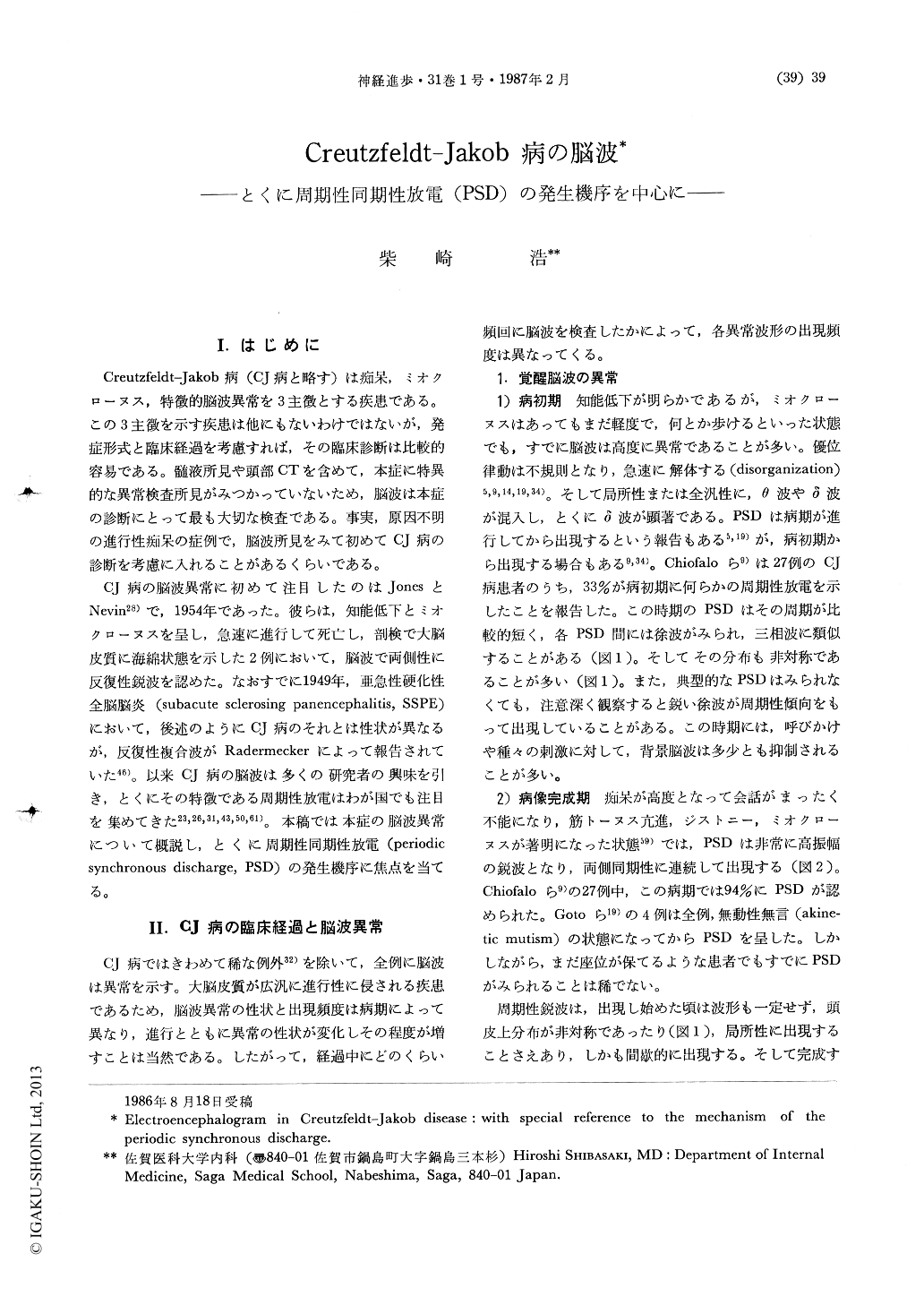Japanese
English
- 有料閲覧
- Abstract 文献概要
- 1ページ目 Look Inside
I.はじめに
Creutzfeldt-Jakob病(CJ病と略す)は痴呆,ミオクローヌス,特徴的脳波異常を3主徴とする疾患である。この3主徴を示す疾患は他にもないわけではないが,発症形式と臨床経過を考慮すれば,その臨床診断は比較的容易である。髄液所見や頭部CTを含めて,本症に特異的な異常検査所見がみつかっていないため,脳波は本症の診断にとって最も大切な検査である。事実,原因不明の進行性痴呆の症例で,脳波所見をみて初めてCJ病の診断を考慮に入れることがあるくらいである。
CJ病の脳波異常に初めて注目したのはJonesとNevin28)で,1954年であった。彼らは,知能低下とミオクローヌスを呈し,急速に進行して死亡し,剖検で大脳皮質に海綿状態を示した2例において,脳波で両側性に反復性鋭波を認めた。なおすでに1949年,亜急性硬化性全脳脳炎(subacute sclerosing panencephalitis,SSPE)において,後述のようにCJ病のそれとは性状が異なるが,反復性複合波がRadermeckerによって報告されていた46)。以来CJ病の脳波は多くの研究者の興味を引き,とくにその特徴である周期性放電はわが国でも注目を集めてきた23,26,31,43,50,61)。
Electroencephalograhic (EEG) abnormalities in Creutzfeldt-Jakob disease (CJ disease) consist of rapidly progressive deterioration of the background activity, and more characteristically, occurrence of periodic synchronous discharges (PSDs). Disorganization of the dominant rhythm and occurrence of abundant delta waves start at the early stage of the illness, being rapidly followed by flattening of the background activity. PSDs usually appear at the full-blown stage of the illness, and persit for a long time, although the period between PSDs becomes longer and variable toward the terminal stage of the illness.

Copyright © 1987, Igaku-Shoin Ltd. All rights reserved.


